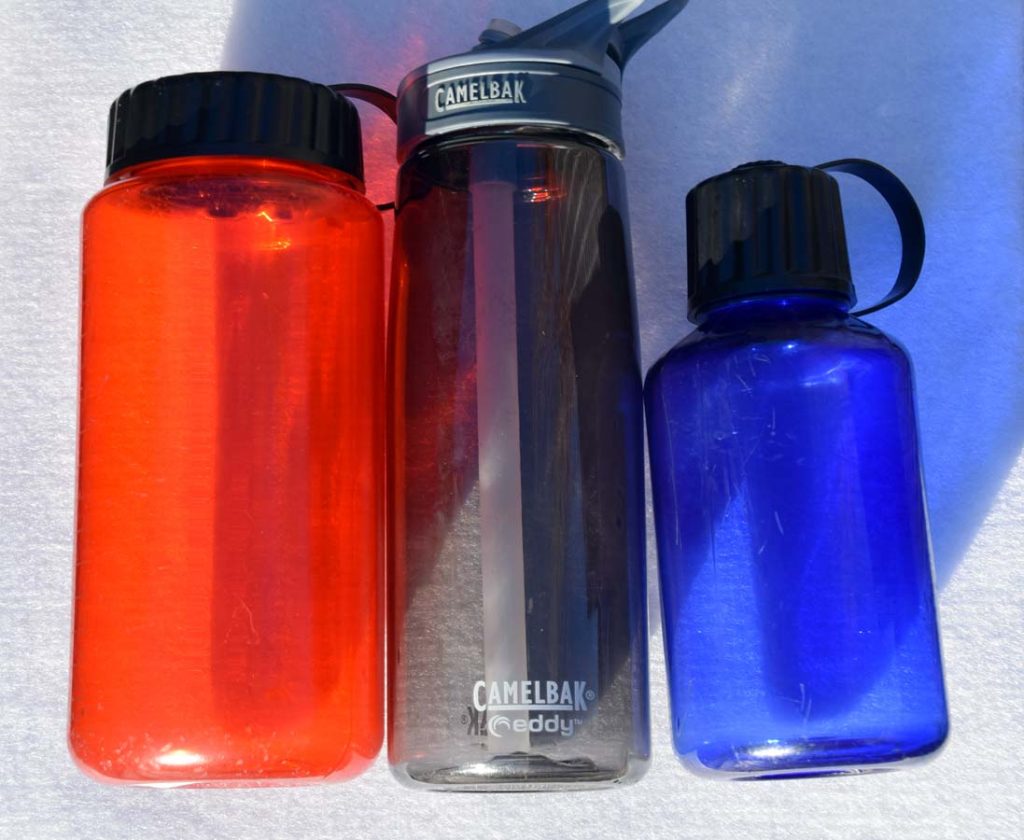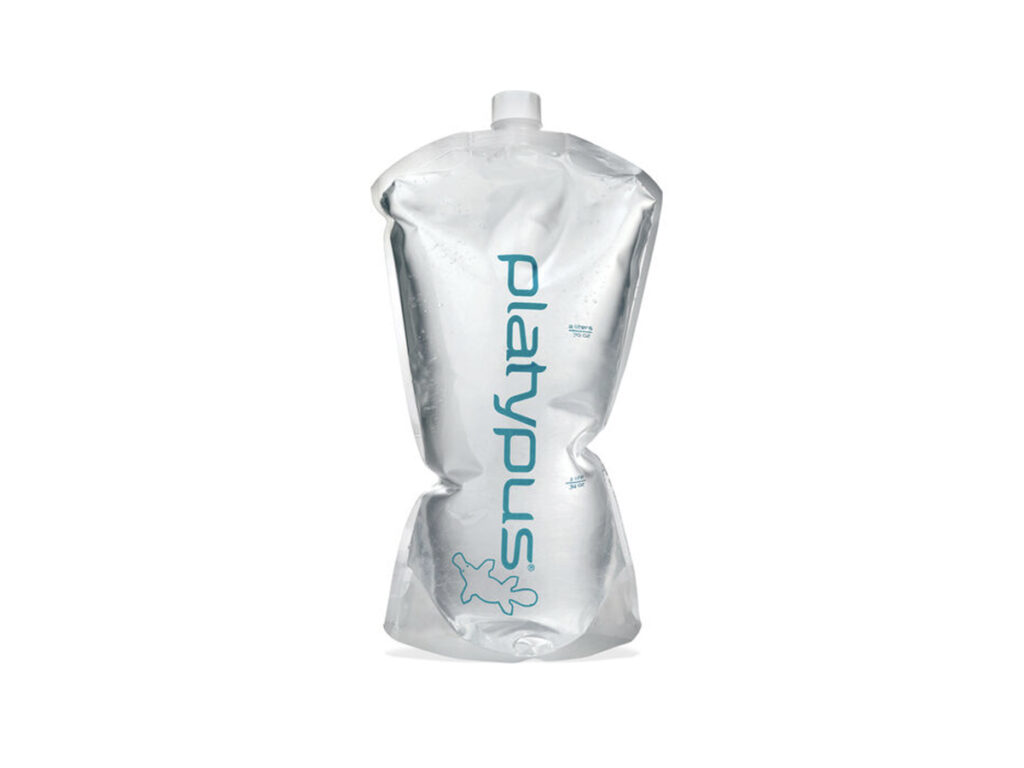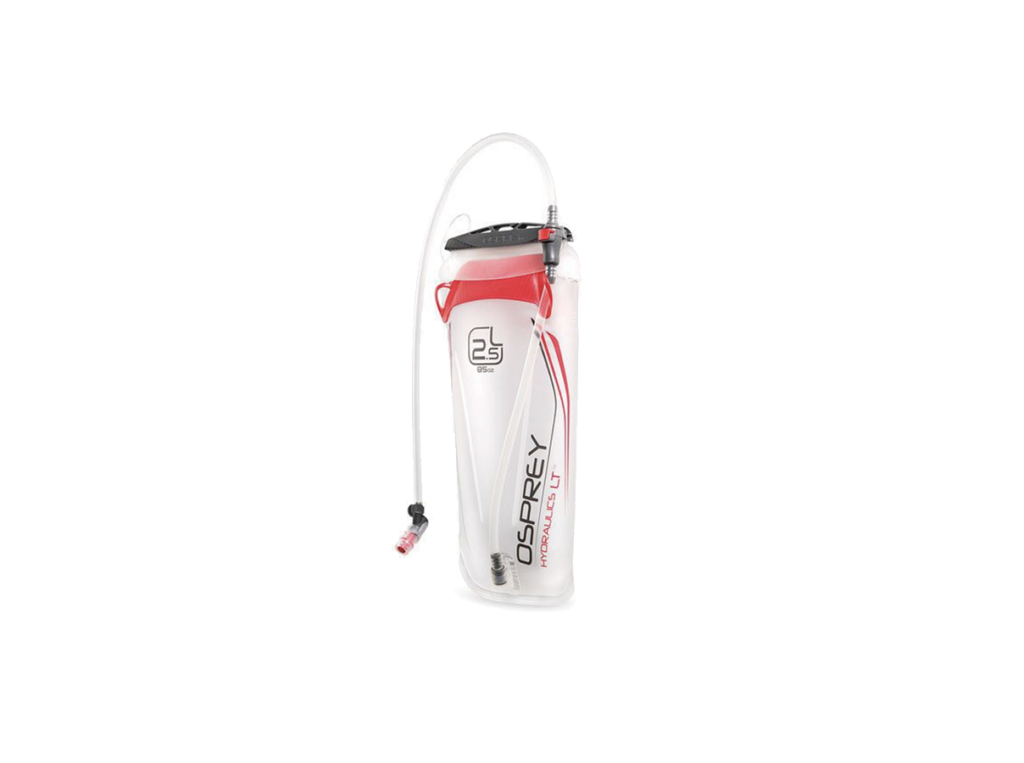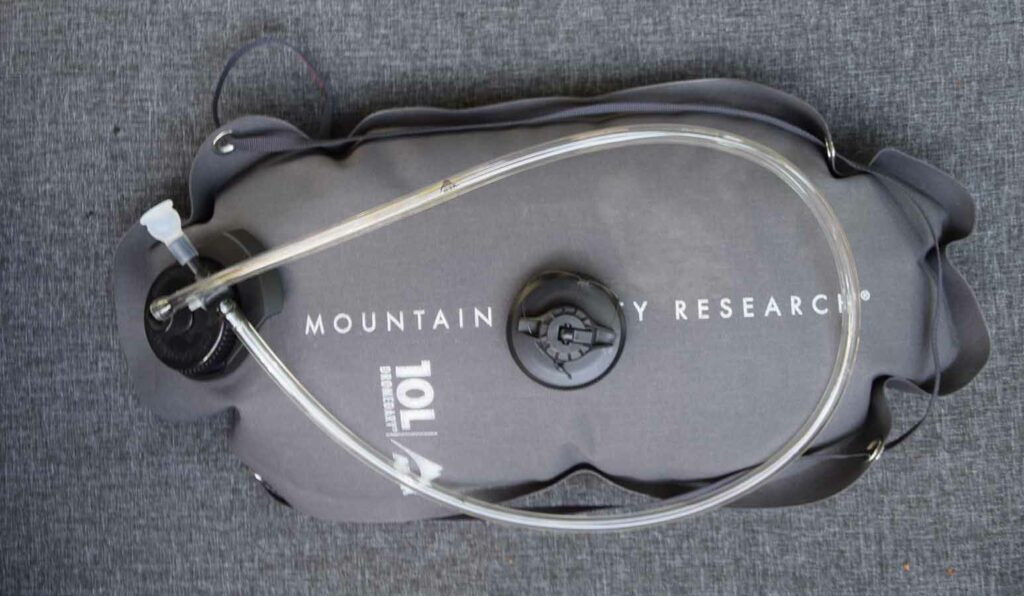Water and Hiking: How much and how to carry
Water Storage
Regardless of the gear we do or don’t carry and the passionate arguments about which is the best thingamajig, the one thing that you can guarantee is in every hiker’s pack is water.
Water is essential to our wellbeing and without it we can’t survive. How long we can live without water is not a straightforward question and while the often-quoted figure is approximately three days, the answer is going to vary depending on many factors. Believe it or not, it is also possible to die from drinking too much water on a hike, it does happen!
As hikers, we should be carrying adequate water on every hike but how much water is enough? And how should we carry it?
How much water should I carry?
This question is a bit like asking ‘How long is a piece of string?’ In other words, a difficult question to answer that depends on many factors. However, it is a question you should be able to answer as you gain experience as a hiker. The factors that you need to consider include:
- How long is the hike? Is this just a short half day hike or a longer multiday hike?
- How far to the next guaranteed water source?
- How hot is it?
- Are you just drinking the water or will you also need water for cooking?
- How hard are you going to be exerting yourself?
- How exposed to the elements are you?
While I am in the process of trying to lighten my load to become an ultra-light hiker, water is one thing I don’t skimp on. I hike year round and during the middle of summer the temperatures can be approaching 40 degrees Celsius during the hottest part of the day so it’s crucial I carry enough water to prevent heat exhaustion/heat stroke.
Shorter hikes
On short hikes, 3-4 km in length, I drink very little water. On the very hot days I will water load before the walk and sip from a water bottle/bladder on the hike. What this means is that on a hot day when temperatures become extreme, I will start by drinking about 750 ml at the start and up to 3 Litres during the day but will carry 2 Litres just in case. During the cooler months, I may only drink ½ Litre at most.
Long hikes
By long hikes I mean hikes where I will be hiking between 6-15 hours and travelling anywhere up to 30-50 km in a single day, or doing multi day hikes.
A good example here is a three-day hike I did on the Canberra Centenary Trail during mid-summer where the temperatures reached 37° Celsius at their hottest. During the biggest day of this hike, I travelled just over 58 km in distance, over 13 hours, and drank 7 litres of water. This is an extreme example that most people are unlikely to ever experience but this provided me with a good indication of my water use. Based on this hike, I now know that in mid-summer I need about 600 ml per hour on average but will typically allow 1 litre/hour.
Rough guide
Over the past few years I have been monitoring my water usage and now know that:
- In the cooler months I drink around 1 litre of water / 10 kilometres travelled.
- In very hot weather (typically 30 degrees celsius +) I will allow 1 litre of water / hour.
How can you minimise your water carry?
Plan your hike
- Know what your water consumption requirements are likely to be based on the environmental conditions and your likely usage
- Know how much water you are likely to need overall for the day
- Know where the reliable refill points are. Do you need to filter?
- In very hot conditions, hike early and late, resting during the middle of the day
- Work out your options in case you run out of water
Drink regularly
- Load up at the start of the day, drink at least 500 ml before you leave camp
- Drink up big at each water source
- Fill up at every available water source
- Drink at the end of the day when you have finished hiking
Monitor your water consumption
- Monitor your water use and make sure you and your group members are drinking
- Use urine colour as a guide. This is not a perfect measure but if your urine colour is dark, then it is likely you need to drink more
- If you start to feel a headache coming on, it may be due to drinking too little
Now that you have some idea of how much water you need to carry, the next thing you need to consider is how you will carry the water.
Rigid water bottles
This is probably the most common way to carry water. Water bottles can be made of either a plastic compound or less commonly metal.
Advantages
- Most, not all, plastic bottles for hiking are transparent so it’s easy to gauge water use
- Relatively inexpensive
- Robust
- The wide mouth versions are easy to fill up
- Narrow mouth versions are easy to drink from
Disadvantages
- More of a conscious effort required to get a drink
- Heavier than the other options
- Most bottles smaller in size up to one litre so if you need large amounts of water then water bottles are not your best choice
- Wide mouth bottles take a bit of skill to learn to drink from
- Narrow mouth water bottles are harder to fill up

1 Litre/750 ml/500 ml had plastic water bottles. The 1 Litre bottle has a wide mouth, the 750 ml bottle has a sipper tube and the 500 ml bottle has a narrow mouth
Soft /collapsible water bottles
Soft water bottles are becoming more common on the trail and while not as durable offer more versatility in how you carry them.
Advantages
- Lightweight
- Collapse to almost nothing when not being used
- The flexibility of these bottles means you have more options for storage
Disadvantages
- Not as durable as hard water bottles
- Can be difficult to clean
- Small spout can be difficult to fill
- Usually small size (½- 1 Litre) so you may have to carry several them if you need large quantities of water for multi day trips

Platypus 2 Litre soft water bottle. Note the small opening which can be hard to fill
Hydration Bladders
These large sized flexible bladders will fit into a dedicated pocket that many packs now have and the smaller bladders are also capable of being strapped to other pockets/parts of the pack.
Advantages
- Able to carry larger amounts of water. Typical sizes range from 1.5-3 Litres
- Very easy to access so you will be more likely to drink
- Usually have a good-sized opening for refilling
Disadvantages
- Depending on how the bladder fits into the pack, you may have to unpack much of your pack when you refill the bladder
- Harder to keep clean, may require a special cleaning kit in some cases
- A bit more fiddly to fill

I’m a big fan of water bladders
Soft Water Reservoir
These large capacity soft reservoirs are ideal when you have no choice but to carry 2-3 days of water or your water sources are limited or unreliable.
Advantages
- Large capacity
Disadvantages
- Expensive compared to other options. This is more an issue with the amount of water you are carrying rather than the container
- Are difficult to drink from – they are a reservoir rather than a drinking container

10 Litre MSR Hydration Bladder
The final word
Everyone is going to carry water in a slightly different way and will carry different amounts. The main thing to remember is to do your planning so you can carry the minimum amount you need without putting yourself at risk. The key here is to carry less but not drink less!